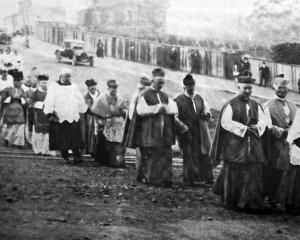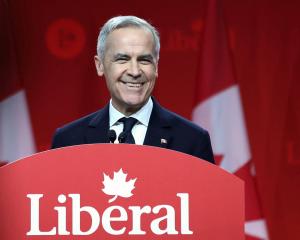
Queenstown Lakes District residents, now numbering some 38,000 people (24,000 ratepayers), are finally to be given a vote on whether tourists should be charged simply for visiting the district.
This will give the Queenstown Lakes District Council a mandate to take to the Government a plea for the change in legislation required for a "bed tax" or some other revenue-gathering mechanism.
But is a referendum really necessary? Is it an effective way to spend another $70,000 of ratepayers' money?
The council and Mayor Jim Boult could simply show the Labour-led coalition the results of Queenstown Airport Corporation's public consultation on its bid to extend its noise boundaries to enable it to double the number of flights and passengers by 2045. It got a hard "no" from the community.
Some 97% of respondents opposed the plans, and QAC, of which QLDC owns 75.01% and receives a healthy dividend each year, was forced to shelve the idea and look to a dual-airport approach with Wanaka. Now Wanaka residents are raising concerns about growth and the potential impact on the character of the town.
The noise boundary extension bid became a focal point for public anger at unchecked growth without the necessary investment in infrastructure to match. The whole idea of growth has been brought into question. Even Mr Boult, who was chief executive of Christchurch International Airport for four years and deputy chairman of the New Zealand Tourism Board before that, has said he does not support the double-digit tourism growth seen in recent times.
He said last week that "price" is a mechanism by which to control numbers. Need more proof of the community's viewpoint? Simply look at the derisive social media comments on any story written about a new hotel, of which there are many.
Not good enough? Then QLDC could show the Government last year's informal survey by the Queenstown Chamber of Commerce of 100 business owners in Queenstown and Wanaka. Some 94% agreed QLDC is unable to fund its infrastructure and "visitor experience requirements" through rates on existing ratepayers. And 81% agreed "I support a local visitor levy that targets visitors only.'
Alternatively, they could take some ministers on a trip round the town, show them the rush-hour traffic over the Shotover Bridge and Frankton Rd, and perhaps the results of E. coli and lake snow tests for Queenstown Bay, Frankton foreshore and Lake Hayes.
Of course, they have probably already done all of this, and met with a brick wall. A referendum will firmly transfer the responsibility for infrastructure stagnation up the chain. The QLDC does not have the power to solve the district's problems. It must wait on funding and the likes of Otago Regional Council and the NZ Transport Agency to act.
The council does, however, have plans. About $1billion worth over the next decade, including about $330million to revitalise Queenstown town centre, $125million on the district's water, and $40million on a new council building precinct/transport hub. Overlapping this is a $500million Queenstown Integrated Transport Strategy. The QLDC wants NZTA to foot 80% of the bill, but it has not indicated a willingness to do so.
A tourist tax, potentially raising $40million per annum, would be a major contributor to getting the district on a firmer footing.
It is not a new idea. In fact, the 1974 editorial made that point too and bemoaned the fact it was not introduced "10 years ago". Back then, the number of annual visitors was 200,000. Now there are 3.3million international and domestic tourists visiting the district each year.












